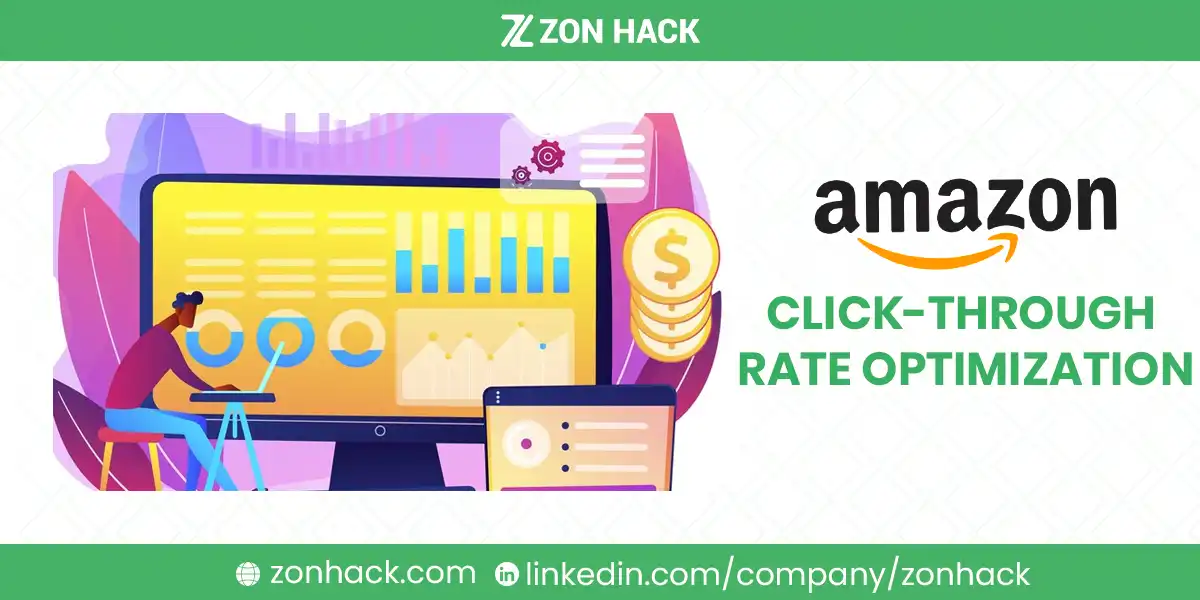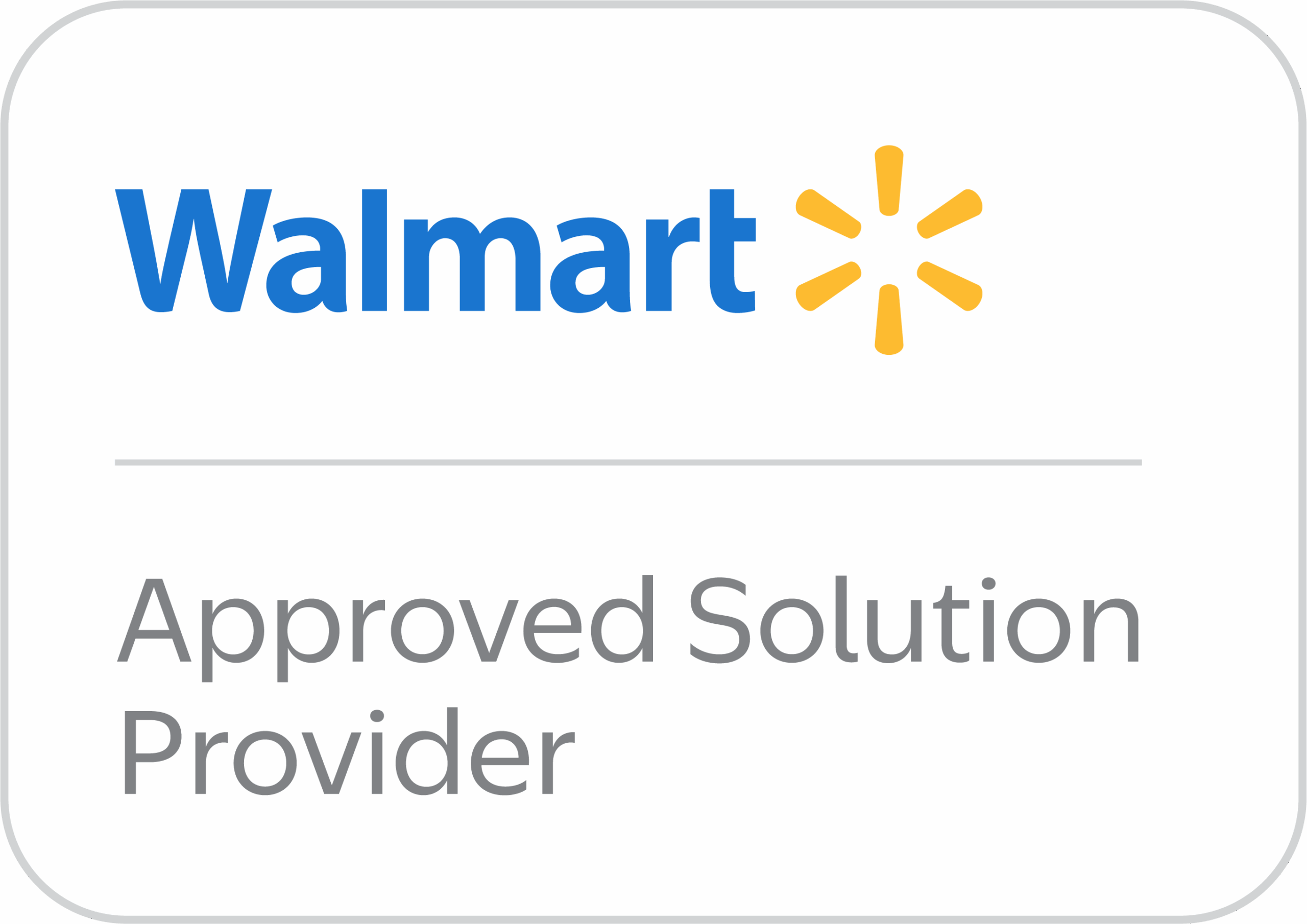Amazon CTR refers to the percentage of people who click on your product listing after seeing it in the search results. The formula is simple: (Clicks / Impressions) x 100. For instance, if your product is displayed 1,000 times and receives 10 clicks, your CTR would be 1%. But behind this straightforward metric lies a wealth of strategic opportunities that can drive your Amazon business to new heights.
So, why does CTR matter? In short, a higher CTR signals customer interest and boosts both traffic and conversions, while also influencing Amazon’s algorithm to favor your listing. Let’s dive deeper into its significance and how to master the art of improving it.
Why CTR Is Critical for Amazon Sellers
CTR isn’t just a vanity metric; it’s a direct reflection of your product’s appeal to potential buyers. Several key benefits demonstrate why it should be a top priority:
- Boosting Sales: Every click on your product listing represents a potential sale. A higher CTR naturally increases the number of people visiting your product page, leading to a greater likelihood of conversions.
- Improving Organic Ranking: Amazon’s A9 algorithm rewards listings with higher CTRs by placing them higher in search results. This creates a positive feedback loop, as improved visibility further enhances your chances of attracting clicks.
- Lowering Advertising Costs: In Amazon Pay-Per-Click (PPC) campaigns, a good CTR improves your quality score, allowing you to pay less per click. This means you get better results from your advertising budget.
- Understanding Customer Interest: A strong CTR provides insights into what resonates with your target audience. It helps you identify which products, keywords, and strategies are connecting with potential buyers.
- Gaining a Competitive Edge: In crowded marketplaces, a higher CTR can set your product apart from competitors, making it the go-to choice for customers.
What Is a Good CTR on Amazon?
Defining a “good” CTR depends on various factors, such as your product category, competition, and placement. On average, an Amazon CTR of 0.4% is considered decent, while anything above 0.5% is excellent. For context, Google Ads CTRs above 1% are considered strong, but the benchmark for Amazon is typically lower due to differences in user behavior and intent.
Here’s a quick breakdown of factors influencing what counts as a good CTR:
- Product Category: Niche markets may have higher CTRs due to targeted audiences, whereas competitive categories like electronics may have lower averages.
- Competition: More competitors offering similar products can dilute your CTR.
- Ad Placement: Products featured in the top search results or with prominent badges (e.g., Amazon’s Choice) generally achieve better CTRs.
Key takeaway: Aim for a CTR that’s above 0.4% as a minimum benchmark, but always strive for improvement by optimizing your listing.
Things That Affect Amazon Click Through Rate
To increase your Amazon CTR, you need to understand what drives a customer to click on a listing. Let’s break down the most critical elements:
1. The Main Image
The main image is the most influential factor in attracting clicks. Since it’s the first thing customers notice, it must stand out. A high-quality, professionally shot image can significantly improve your CTR.
- Clarity and Focus: Showcase the product clearly, ensuring there’s no ambiguity about what’s being offered.
- Highlight Unique Features: For example, if you’re selling a multi-functional blender, show it in action, blending various ingredients.
- Lifestyle Context: Customers connect better with images that show the product in use. For instance, a coffee maker placed on a cozy kitchen countertop feels more relatable than one in a plain white background.
- Mobile Optimization: Keep in mind that most Amazon shoppers browse via mobile. Ensure the image looks sharp and engaging on smaller screens.
2. The Title
Your product title needs to be a blend of clarity, relevance, and SEO optimization. A well-crafted title not only informs the customer but also improves discoverability in Amazon search.
For example, consider these two titles for a Bluetooth speaker:
- Bad Title: “Portable Bluetooth Speaker – Black.”
- Optimized Title: “Portable Bluetooth Speaker with 24-Hour Battery Life, Waterproof Design, and Deep Bass – Black.”
The optimized title includes keywords like “waterproof,” “deep bass,” and “24-hour battery life,” highlighting key features that attract clicks while enhancing search rankings.
3. Keywords
Using the right keywords is vital for attracting your target audience. Keyword optimization ensures that your product appears in the searches of interested buyers. To achieve this, sellers must:
- Conduct thorough keyword research using tools like Helium 10 or Jungle Scout.
- Incorporate relevant, high-traffic keywords in titles, bullet points, and backend fields.
- Use negative keywords in PPC campaigns to avoid irrelevant clicks and impressions.
4. Price
Price is a deciding factor for many Amazon shoppers. A competitive price encourages clicks, while overly high or low prices can deter potential buyers. Sellers should:
- Research competitor pricing and adjust accordingly. For example, if most competitors price their wireless headphones at $50–$70, staying within that range improves CTR.
- Use psychological pricing strategies, like pricing at $49.99 instead of $50.
- Offer promotions, such as “20% off,” to entice budget-conscious shoppers.
5. Reviews and Ratings
Shoppers heavily rely on customer reviews and ratings to gauge the reliability of a product. A high number of positive reviews boosts credibility and increases CTR.
- Encourage customers to leave reviews by following up post-purchase with helpful tips or reminders.
- Address negative reviews professionally, demonstrating a commitment to customer satisfaction.
- Highlight testimonials in your product description to showcase real-world usage and benefits.
How to Optimize Your Product Listing to Maximize Your CTR
Amazon product listings act as the first impression for shoppers. Ensuring every element of your listing is optimized can make a dramatic difference in your CTR. Here’s how to polish each component for maximum impact:
1. Crafting Click-Worthy Titles
The product title is often the first thing shoppers notice in search results. A title that is clear, concise, and keyword-optimized can significantly boost CTR.
- Key Elements of a Good Title: Include the product’s brand, key features, size, color, and use case, arranged logically. For instance, instead of “Vacuum Cleaner, 5 Settings, Black,” use:
“Dyson V15 Cordless Vacuum Cleaner | HEPA Filtration | 60-Minute Runtime | Lightweight (Black)” - Avoid Overloading Keywords: While including relevant keywords is essential, titles that appear spammy or overly packed with keywords can deter clicks.
2. Selecting High-Quality Images
Images are arguably the most critical element of your listing when it comes to CTR. Amazon shoppers rely heavily on visuals to assess the quality of a product.
- Main Image: Your main image should be clean, high-resolution, and show the product on a pure white background, as per Amazon’s guidelines.
- Secondary Images: Use lifestyle images, close-ups, and comparison shots to highlight product benefits and usage scenarios.
- Example: If you’re selling a yoga mat, include a lifestyle image showing someone doing yoga outdoors with the mat, emphasizing its texture and durability.
3. Writing Compelling Bullet Points
Amazon’s bullet points are your opportunity to summarize your product’s top benefits and features. To maximize CTR, ensure these are not only descriptive but also persuasive.
- Focus on Benefits Over Features: Instead of saying, “Made from durable materials,” try “Built to last with durable materials, ensuring years of reliable use.”
- Use Allotted Space Wisely: Amazon allows up to five bullet points—use them to address customer pain points, highlight unique selling points, and showcase guarantees or certifications.
4. Perfecting Product Descriptions
While product descriptions primarily impact conversions, they play a secondary role in improving CTR. A well-crafted description encourages users to click through and explore more.
- Include Keywords Naturally: Ensure that important search terms are seamlessly integrated into your description without making it sound unnatural.
- Add a Call-to-Action: Use phrases like “Order now to enjoy fast shipping!” to create urgency and entice clicks.
5. Highlighting Competitive Pricing
Amazon shoppers often compare products at a glance, with price being one of the most visible aspects. Competitive pricing can make your listing stand out among similar options.
- Use Pricing Psychology: Price points ending in “.99” or “.95” often appear more attractive to customers.
- Leverage Discounts: If possible, include promotions or coupons to make your product more enticing. A listing showing “20% off” in the search results tends to draw more clicks.
6. Showcasing Customer Reviews and Ratings
Products with high ratings and numerous reviews tend to receive more clicks. Shoppers trust peer opinions, so prominently displaying your strong reviews can work wonders for CTR.
- Aim for a Rating Above 4 Stars: Products with ratings below 4 stars often experience reduced CTR.
- Respond to Reviews: Addressing customer feedback, especially negative reviews, shows professionalism and can improve shopper confidence.
7. Maximizing the Use of Keywords
Keywords influence whether your product appears in search results, directly affecting your CTR. However, overusing them can harm readability.
- Primary Keywords in Strategic Locations: Ensure your main keyword appears in the title, bullet points, and backend search terms.
- Backend Keywords: Use this space to include alternate spellings, synonyms, or related terms that customers might search for.
8. Enabling Amazon’s FBA (Fulfilled by Amazon)
Shoppers are more likely to click listings that offer fast, reliable shipping options like Prime Delivery. By enrolling in Amazon’s FBA program, your product is eligible for Prime, giving you a competitive advantage.
Other Strategies to Optimize Your Amazon CTR
The key to improving CTR lies in constant optimization and monitoring. By addressing the factors above, you can make meaningful changes that resonate with customers. In the next part, we’ll cover advanced strategies like leveraging A/B testing, enhancing your Amazon PPC campaigns, and utilizing A+ content for maximum impact. Stay tuned for actionable insights to take your Amazon CTR to the next level!
1. Leverage A/B Testing for Continuous Improvement
One of the most effective ways to refine your product listing and improve CTR is through A/B testing. This involves comparing two versions of a listing element, such as the main image or title, to see which one performs better. Amazon’s Manage Your Experiments tool makes it easy to test these elements:
- Main Image Testing: Try variations like lifestyle photos versus plain white backgrounds to see what resonates most with your audience.
- Title Testing: Experiment with different structures, focusing on keywords, unique selling points, or emotional appeals.
- Pricing Adjustments: Test slight variations in price, such as $49.99 versus $52.99, to find the sweet spot that maximizes clicks without reducing profit margins.
By iterating based on real customer behavior, you can continuously optimize your CTR and stay ahead of competitors.
2. Optimize Amazon PPC Campaigns
Amazon’s Pay-Per-Click (PPC) advertising can be a game-changer for improving CTR when executed strategically. Here’s how to make your ads work for you:
- Target High-CTR Keywords: Focus on keywords that have consistently driven clicks to your listing. Use tools like Helium 10, Jungle Scout, or Amazon’s own Search Term Report to identify these.
- Sponsored Brands and Sponsored Display Ads: These ad types allow for visually appealing campaigns that capture attention more effectively than simple Sponsored Products ads.
- Refine Targeting: Use negative keywords to avoid irrelevant impressions that dilute your CTR. For example, if you sell premium coffee, exclude terms like “cheap coffee.”
Investing in PPC is particularly beneficial for new listings, as it can drive visibility and initial traffic, creating a momentum that sustains even after the ad spend is reduced.
8. Create Compelling A+ Content
A+ Content (formerly known as Enhanced Brand Content) enables sellers to create visually rich product descriptions that can significantly increase CTR and conversions. While this content is visible after a click, it’s crucial in motivating repeat purchases and word-of-mouth referrals.
Use A+ Content to:
- Showcase Product Features: Use infographics and comparison charts to visually highlight why your product is superior.
- Tell Your Brand Story: Add emotional appeal by sharing your brand’s journey, mission, or values.
- Address FAQs: Preemptively answer common questions within the A+ content to reduce hesitation among potential buyers.
Advanced Strategies for Maximizing CTR
Amazon SEO Best Practices
Amazon SEO is distinct from Google SEO but equally important. To dominate the search results and attract clicks, focus on these essentials:
- Keyword Placement: Place high-performing keywords strategically in your title, bullet points, and backend search terms.
- Backend Keywords: Utilize all available character space in Amazon’s backend fields to include synonyms, alternate spellings, and regional terms.
- Frequent Updates: Monitor the effectiveness of your keywords and update them regularly based on performance data.
Utilizing Badges and Promotions
Badges like “Amazon’s Choice” or “Best Seller” can dramatically improve your CTR by establishing trust and authority. Although you can’t directly control these, you can influence them by:
- Maintaining strong reviews and ratings.
- Offering competitive pricing.
- Driving sales through optimized PPC campaigns.
Promotions like “Limited-Time Deals” or “Coupons” are another effective way to grab attention. A bright green “Save 15%” tag next to your listing can make all the difference in a customer’s decision to click.
FAQs
How often should I update my product listing?
Updating your listing regularly is essential, especially after launching a product. Review and optimize every 3–6 months or whenever you notice a drop in CTR.
Can a low CTR hurt my organic ranking?
Yes, Amazon’s A9 algorithm factors in CTR when determining search rankings. A persistently low CTR can lead to reduced visibility, as the algorithm interprets it as low customer interest.
How can I compete with established sellers with more reviews?
Focus on elements within your control: high-quality images, compelling titles, and competitive pricing. Using PPC campaigns to build initial traction can also help bridge the gap.
ZonHack: Your All-in-One Amazon CTR Optimization Solution
Optimizing your Amazon listings can be time-consuming and complex, especially with so many elements to refine. That’s where ZonHack comes in. As a comprehensive Amazon service agency, ZonHack handles everything from crafting click-worthy titles to designing high-quality images, optimizing keywords, and perfecting product descriptions.
With a data-driven approach, ZonHack ensures your listings are not only visible but also irresistible to potential customers. By leveraging advanced analytics and A/B testing, we help you boost your CTR, improve your rankings, and maximize your sales.
Ready to take your listings to the next level? Let ZonHack do the heavy lifting and start seeing results today! Call tel: +19316839946 or book a meeting to get started today.




